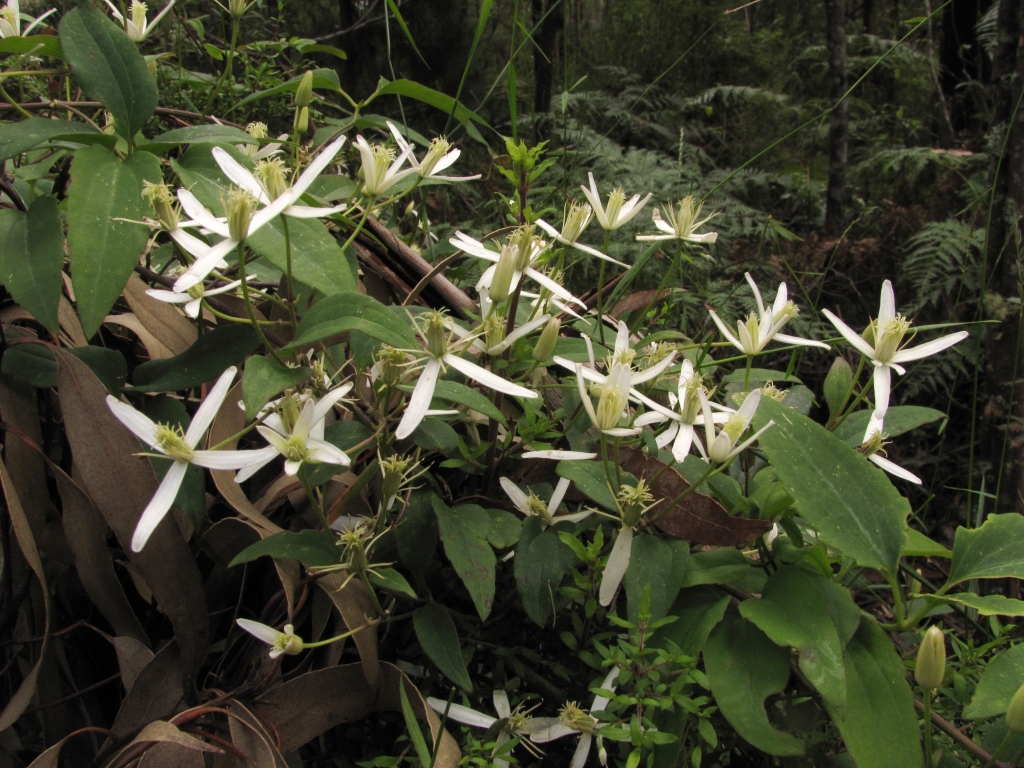Ranunculaceae
Tufted, stoloniferous or rhizomatous, annual or perennial herbs with rosetted or alternate leaves, or woody climbers with opposite leaves. Leaves petiolate, simple and entire, or more commonly, dissected or compound; stipules usually absent but petioles often dilated and sheathing at base. Flowers solitary or in racemes or cymes, usually bisexual, actinomorphic, rarely unisexual or zygomorphic; perianth of 1 or 2 sepaloid and/or petaloid whorls; 'petals' 5–many, rarely fewer, usually with nectary. Stamens usually numerous, in 1–several whorls; staminodes sometimes present. Carpels usually numerous, free and spirally arranged, rarely few, fused, in 1 whorl or solitary; style 1 per carpel; ovules 1–several. Fruit 1–several follicles or achenes in a head or spike, rarely a berry or capsule.
About 2000 species in 50–70 genera (depending on circumscription), cosmopolitan; 10 genera (5 naturalized) and c. 60 species in Australia.
The apparent petals in Ranunculus and closely allied genera are commonly regarded as petaloid nectaries and termed by some 'honey leaves'. For simplicity, they are here called 'petals'.
Walsh, N.G. (1996). Ranunculaceae. In: Walsh, N.G.; Entwisle, T.J., Flora of Victoria Vol. 3, Dicotyledons Winteraceae to Myrtaceae, pp. 35–63. Inkata Press, Melbourne.
 Spinning
Spinning


